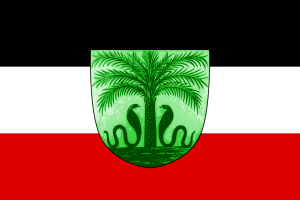
I always loved the name of the city Annaba in Algeria. From the name, one could think that we are talking about a city in subsaharan Africa. I used to think that the origin of its name would be Berber or from somewhere in sub-Saharan Africa.
Annaba is the 4th largest city of Algeria, after Algiers, Oran, and Constantine. It is a coastal city which has grown tremendously, like most cities around the globe, in the 20th century. Present-day Annaba grew up on the site of Aphrodisium, the seaport of the Roman city Hippo Regius. The modern city has since expanded south over Hippo’s ruins as well. Its former names Bône and Bona derived from “Ubbo“, a local form of the name Hippo. Its informal name “Land of the Jujubes” derives from that abundance of that fruit in the region.

Annaba, as one of the most ancient cities of Algeria, founded in 1295 BC, has had different names during her life: Ubbo, Hippo Regius, Hippone, Bona, Bled El Aneb, Bône, and nowadays Annaba. It was known as Balad al-Unnab or the “Land of the jujubes” from which the name Annaba is derived, because of the abundance of that fruit in the region.
During the rule of France (empire and republics), the city was called Bône. It was one of the main French settlements, and it still has a sizeable minority of the “Pied-Noir” to this day. During World War II in 1943, Bône was a crucial highway and sea location for the invasion of Tunisia, and thence the driving of the Axis Powers (Germany and Italy) out of Africa in May 1943. Bône remained in Allied hands until the end of the war in 1945, and then it remained a part of French Algeria until the independence of Algeria in 1962.

The city is an important hub of the world steel industry with the steel complex of El Hadjar, eight kilometres south of the city. It is the largest in Africa. Phosphate and metal industries are also prominent in the area. Other industrial sectors, private, focus on agri-food, metal processing, wood products, and construction.
Annaba is an important centre for tourism, and is one of the major tourist attractions in the western Mediterranean. It is located in the north east of the country, at 536 km east of Algiers and 105 km from the Tunisian border.

The downtown district of Annaba is on the sea-front, and includes the promenade called the Concours de la Revolution (previously called Le Cours Bertagna) which is a lively area, brimming with arcades and all kinds of covered restaurants, terraced cafes and kiosks. If you visit Annaba, remember to taste the Jujubes and enjoy the sea!!!
























 Un vieux balai nettoie mieux qu’un nouveau
Un vieux balai nettoie mieux qu’un nouveau




 On ne conduit pas chez le coiffeur un enfant qui n’est pas encore né
On ne conduit pas chez le coiffeur un enfant qui n’est pas encore né